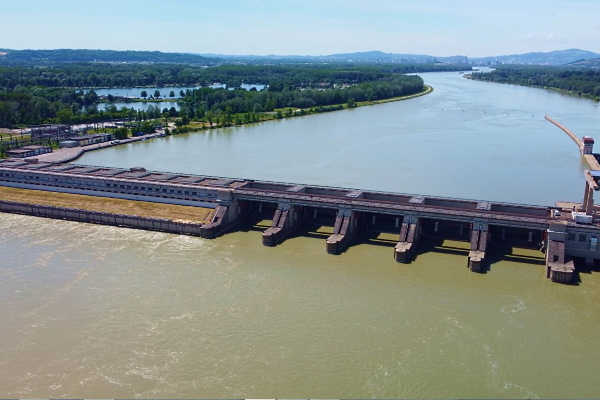To consider an application for financing, fill out the form and send it to us by e-mail along with the project brief, or contact our experts
Project finance services are particularly in demand in the UK, USA, Australia, United Kingdom and Italy in areas such as renewable energies, mining, public infrastructure, real estate projects (shopping malls and hotels), gas and oil pipelines.
Sedona Investments is an international investment and consulting company that widely implements project finance schemes around the world.
Our company has a successful presence in Europe, USA, Latin America, North Africa, as well as the Middle East and East Asia.
Project finance in the UK: origins and history
Project finance services in the UK have become an important investment activity.PF originates from a popular financial product, debt repayment using future cash flows generated by the project. These financing methods were first used in the 1930s for the development of oil fields in the United States, reaching Great Britain only in the second half of the twentieth century.
European companies pioneered project finance in the 1970s with the start of large-scale development of oil reserves in the North Sea.
During the "oil boom", prices for oil and other energy resources rose sharply several times. However, due to the high cost of construction, such projects were difficult even for large companies, which made it necessary to attract external financing. That is why banks became active participants in these operations, providing the funds necessary for the development of oil fields in the form of long-term loans against oil reserves.
With the start of oil production, the debt of the project companies was paid off using the income received from the sale of oil.
Despite the risks associated with the uncertainty of oil reserves, the high profitability of the oil business attracted British financial institutions, which began to independently search for potentially profitable projects for investment.
However, the recession of the oil market in the 1980s led to a decrease in the value of the PF portfolios of many banks, and put forward the tasks of diversification. Therefore, the banks that were involved in PF focused their efforts on investing in high technology, mining, telecommunications, tourism and real estate.
In the early stages of the development of project finance, the world market was divided between a limited number of American, Canadian, German and Japanese banks. Later, with the development of oil and gas production in the North Sea, British commercial banks joined them, and over time, PF was mastered by financial institutions from France, Switzerland, Holland, Belgium, Italy, etc. The use of various types and schemes of project finance made it possible to implement large investment projects in the UK and other industrialized countries.
The privatization of energy assets in the 1990s and the transfer of energy management to private companies played an important role in the development of project finance services in the United Kingdom.
The development of PF and the role of the UK: stages and examples
The history of the origin and development of project finance in the UK is characterized by two features.First, project finance in this country has gone through the entire development path to the present state twice as fast as most countries, namely, in 15 years.
Secondly, the impetus for the emergence of project finance in the UK was concessions, where investment companies began to actively invest (utilities, transport, and much more).
The PF tools were especially actively used in the construction of hospitals, which British companies built more than fifty in just 15 years.
Unfortunately, for a long time there was no official statistics that would characterize the world project finance market in terms of its volume and structure. The situation changed in 1996, when the Project & Trade Finance created its own database of transactions in the field of project finance in various regions of the world. According to the newspaper, in 1996, 897 transactions were concluded to finance investment projects on PF terms for a total of $ 223.9 billion.
At the same time, the average cost of the project was $ 249.6 million.
British companies played an important role in this market at that time (especially companies in the oil and gas and energy sectors).
According to the analytical agency Thomsom Reuters for the period 2001-2008. The volume of project finance transactions in the world has tripled. However, in 2009, as a result of the global economic crisis, the volume of project finance in the world decreased compared to 2001 by 41%, amounting to only 153 billion dollars.
These global phenomena also hit British companies painfully, forcing them to abandon many attractive investment projects.
After overcoming the consequences of the crisis in 2011, the project finance market moved into the next phase of its development. We see that the period of growth in the global project finance market lasted until 2014. At the same time, the largest increase in PF volumes was demonstrated in 2012, which was due to the recovery of the USA, Great Britain, Germany and other leading countries.
It was a period of intensification of investment processes in various areas of business, which led to an increase in demand for financial resources. In subsequent years, the growth rate slowed down, amounting to 7.84% in 2015 compared to 2014.
After that, a period of weakening conditions began in the project finance market, which continues today against the backdrop of a devastating pandemic, the war of sanctions and the rupture of traditional economic ties.
The rate of decline in project finance in the world is growing from year to year.

In 2015, this figure fell by 5.6% compared to the previous year, in 2016 by 12.73%, and in 2017 by 18.36%.
The list of entities that operate in the global project finance market is quite wide. Of particular note here are law firms and technical contractors, which are common in UK project finance practice. In 2017, the leaders in terms of the amount of transactions here were commercial banks, issuing loans for the implementation of large projects ($ 582,630,000 per transaction). International financial institutions are traditionally far behind these players.
In 2017, the share of financial sponsors in the total volume of project finance was 25.44%, and the share of law firms was 25.29%.
Among the leaders it is worth mentioning such companies as Cheniere Energy (USA, energy sector), Kinder Morgan (Canada, energy sector), Macquarie (Australia, financial-industrial group), Arclight Capital Partners (USA, energy sector), Delta Air Lines (USA, air transportation), as well as Clifford Chance (UK), Linklaters (UK), Norton Rose Fulbright (UK), Allen & Overy (UK), and others.
Table: Stages of development of project finance in the world.
| Period | Main areas of application | Features of the development of project finance |
| The beginning of the 19th century – mid-1950s | Mainly implementation of municipal projects and projects in the field of public utilities. | PF is based on concession agreements with government participation. |
| Mid 1950s to 1973 | PF is used to restore destroyed economies of the countries participating in the Second World War, including the United Kingdom. | The emergence of the main features of a modern PF, such as the targeted nature of financing, the long-term nature of borrowing, minimization of credit risks, the combination of organizational functions and financing. |
| 1973 – 1990 | Reallocation of financial resources from the energy and oil and gas sectors to construction and heavy industry. | Mandatory presence of a project company (SPV). Participation of large bank syndicates. The end of the monopoly of British and American banks and the expansion of the influence of European and Asian banks. |
| 1990 – 2000 | Implementation of mainly infrastructure projects, including international projects with multi-billion dollar investments (for example, Eurotunnel). | Diversity of investment sources and investment models. Direct government involvement in project finance and the growing role of government regulators. |
| 2000 – 2008 | Rapid growth of Asian markets based on pilot projects in the energy sector, which were later implemented in investor countries. Implementation of the "pilot projects" scheme. | Slowdown in the development of PF in the UK, where it is considered a mature instrument. Internationalization of PF. Rise of large infrastructure projects in the countries of the former USSR and the Eastern Bloc. |
| 2008 to present | Predominantly innovative nature of investment projects (high technologies, renewable energy sources). | The volatility of financial flows and the search for new financial models after the global crisis. |
One of the classic examples of "clean" project finance is the Eurotunnel project under the English Channel (1993), which connected the UK with the European continent.
For the first time in Europe, this project was implemented exclusively through private sector investments, without the participation of government agencies and international organizations. The total cost of the project was £ 7 billion.
The funding was provided by a syndicate of 209 banks from fifteen countries.
There are several reasons why the Eurotunnel project has been used as a prime example of project finance services in the UK. At that time, this ambitious project demonstrated the level of complexity and scale of investment ideas that can be realized through the above mechanism. Today, project finance in many countries of the world has become an integral part of the system of financial support for investment processes, giving rise to many scientific studies in this direction.
Currently, the lion's share of global project finance operations are in Western Europe and North America.
This leads to increased competition in the market, and also attracts the attention of numerous entrepreneurs, politicians, researchers and financial experts. In fact, project finance in the UK today serves as the "gold standard" for similar projects in many other parts of the world, especially in developing countries.
The essence of project finance and its advantages
Project finance in European countries, including the UK, is one of the most popular methods of financing investment projects.
Despite the sufficient practical development of this issue, the definition of "project finance" is interpreted by scientists and financiers in different ways. Today there is an urgent need to clarify the concept of PF, based on already existing practical schemes for financing projects in the UK and beyond.
Any investment project can be described as a complex, non-recurring event, limited in time, budget, resources, as well as following clear instructions developed according to the needs of the customer.
It should be considered that the main goal of an investment project is the implementation of a project that best meets the needs of the customer. In addition, there are qualitative characteristics of the investment project that help distinguish the PF from other related financing instruments.
Distinctive features of project finance
First of all, project finance is closely related to the concept of "project", while in commercial lending, investment loans and leasing, financial institutions operate with the concept of "borrower".Of course, when deciding on participation in financing, the initiator company is carefully assessed, but the prospects of the project play a much more important role.
The purpose of developing a comprehensive scheme for the planned financing of a specific project is its implementation in a specific time frame, within a certain budget, with maximum satisfaction of the customer's needs while minimizing possible financial risks. The main distinguishing feature of project finance is that the source of loan repayment within the framework of its financing structure is exclusively the income generated by the project itself.
Unlike PF, an investment loan is usually issued against the assets of the borrower's company.
It should be noted that the main difference between project finance and investment lending is that in the first case, the loan is repaid using the financial flows of the project, while in the second case, the loan is repaid mainly due to the economic activity of the borrower and can be carried out before putting the project into operation.
Taking into account the high risks of project finance, lenders strive to ensure the most effective risk management, which is reflected in the complex scheme of financial structuring of the project. In addition to traditional methods of risk reduction (for example, insurance), the method of distributing risks between participants in the implementation of investment projects is widely used.
Depending on the degree of responsibility of the borrower, British financiers distinguish three types of project finance listed below:
• Financing with full recourse (the lender has the right to receive debts from the borrower under the agreement at the expense of all the borrower's assets);
• Financing with partial recourse (the lender retains the right to partial compensation at the expense of the borrower's assets);
• Financing without recourse (lenders assume most of the risks based on the analysis of the project, waiving any requirements in relation to the founders in advance).
The main approaches to the development of an integrated project finance scheme are due to the scale and complexity of the project, the structure of its financing, which implies the following:
• Development of a comprehensive financial scheme for the project.
• Establishment of a specialized project company, which usually combines the functions of a borrower and a project operator.
• Selection of the principle of risk distribution.
• Development of a detailed business plan with a package of expert opinions and recommendations.
• High commissions for project analysis and financing arrangement.
• Additional investor commissions to compensate for numerous project and country risks.
• The risk of losing independence by the initiator of the project.
Most large-scale and costly projects for the construction of mines, large factories, power plants, pipelines, seaports, airports and railways in the UK today are carried out mainly under the project finance scheme.
This can be attributed to the advantages listed below.
Advantages of project finance compared to other forms of borrowing
Despite the significant costs of developing a comprehensive financing scheme for a specific project, the project finance services in the UK have a number of significant advantages over other forms of raising borrowed funds.
They are as follows:
• Attraction of investments in the amount exceeding the assets of the investment seeker.
• The ability to quickly implement capital-intensive projects at an early stage of development.
• Minimization of country risks by creating a project company in the country of origin of capital, as well as by creating a management company (as a 100% subsidiary of the project company) in the country where the project is being implemented.
• Possibility of temporary suspension of debt servicing while the project reaches its planned production capacity.
• Rational structuring of project risks between project participants.
All the advantages noted are decisive when considering large-scale long-term and high-cost projects implemented by British companies, especially in innovative areas.
In the classic project finance scheme, as a rule, an economically and legally independent project company (Special Purpose Company (Vehicle), SPC or SPV) is established. There are several advantages to this approach. First, working from scratch avoids the risk of influencing the project by circumstances related to the company's operating history.
Secondly, the project becomes more transparent, which makes it possible to optimize the distribution of risks associated with the implementation of the project. Some project finance researchers have identified SPVs as a critical success factor in project finance.
For the company of the borrower, the PF has a number of other advantages, which include obtaining external financial resources for a long-term period and maintaining a high credit rating.
Project finance also has certain disadvantages, which are listed below:
• Extremely tight control of investors over the activities of the borrower.
• High costs for pre-project work and a long period of the pre-investment phase
• The risk of loss of independence by the borrower.
Analyzing the practical experience of implementing investment projects in the UK and abroad, we can state that with project finance, investor income is significantly higher than when using other financing instruments.
Often in the practice of PF there is a structure of distribution of income from a project, in which the investor receives a certain share in the capital of the project company.
Summarizing the above, we can say with confidence that today project finance as a method of financing and implementing an investment project has a number of significant advantages over other forms of raising borrowed funds.
PF has proven its right to be considered one of the most highly effective ways to successfully complete capital-intensive projects in many areas.
Project finance as an economic tool allows solving the problems of implementing investment projects associated with the use of complex organizational, technological, financial instruments and schemes, as well as structuring (reducing and redistributing) project risks.













